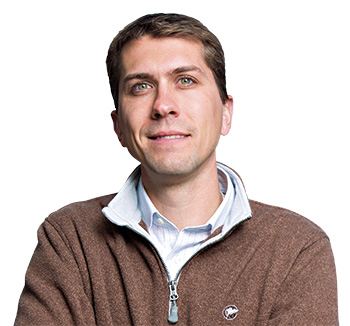Social media advice is far from perfect

Jared Nemitz
Beware of #FakeNews, they tell us. Fake news is referenced almost every day in the political arena, but it also can be seen in the social media world of turfgrass.
I have written about the value of social media and how to use it professionally to help brand yourself and highlight accomplishments on your course. Social media applications such as Twitter and Facebook grow within the turfgrass world every year. One of my favorite turfgrass groups on Facebook has almost doubled in size this past year to more than 12,000 participants.
Learning better and more efficient ways to manage a golf course through social media can be productive. Some of the hot topics discussed on social media this year have led to great dialogue about the current labor pool, golf course expectations, products being used and how to take care of yourself both physically and mentally.
However, not all is perfect in the social media world. The amount of bad or #FakeNews spread in online groups and on Twitter is nauseating and sometimes infuriating. Using social media to find answers to problems is good. Getting bad information and acting on it can be detrimental.
Often, an innocent question can be answered with “solutions” from well-intentioned people who are just wrong. Not just a little wrong. I mean out-of-this-world wrong. The plea, “Help me identify this disease on my course” turns into a listing of every disease in the textbook.
Social media can’t be a replacement for solid agronomic and scientific facts that help solve a challenge. Colleagues in this industry can be some of the most helpful resources, but you always must weigh where the information is coming from and discover if there is someone more qualified to help. If something is intriguing and looks like it may work for you, reach out to that person and get more information. A snapshot on the internet may not always be what you think.
Golfers incessantly compare maintenance and green speeds of local golf courses. With the rise of social media, golfers are able to not only compare your golf course with one down the street, they can compare your golf course to one halfway across the world. With superintendents posting more behind-the-scenes information, golfers now can question why their courses aren’t using similar procedures and achieving similar results.
Turfgrass managers also are falling into the “keeping up with the Joneses” mentality. If someone posts something that you may not be doing on your course, you may start to question yourself. You end up chasing a false reality that can lead to anxiety, second guessing and a lack of confidence in what you are doing.
We also must be careful in our personal lives of what we perceive to be reality. Seeing only the good pictures that people post creates a nonexistent reality that is envied and cannot be achieved. The same can be said in comparing courses across social media. What is right for one golf course’s budget and short- and long-range goals may not be right for yours. Being compared to local courses by golfers was hard enough. Now we are comparing our management strategies to courses we have never visited and people we have never met.
Social media represents one giant group chat. Be prepared when you present a question for answers from all over the spectrum of knowledge, expertise and geographical locations. Just because something sounds or looks right on the internet does not make it right. Don’t let these answers be your final step. Once pointed in the right direction, gather more information based on proven science from trustworthy resources such as professors, agronomists and trusted colleagues. Be confident in your practices, not #FakeNews, and do what is right for your course, not theirs.










